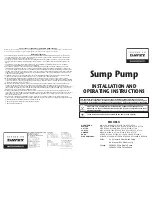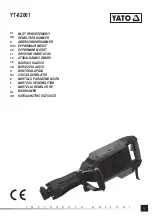
TABLE of CONTENTS
1.0 – INTRODUCTION ______________________________________________________ 2
1.1 PRODUCT REGISTRATION
2.0 – PRODUCT DESCRIPTION ______________________________________________ 3
3.0 – APPLICATIONS _______________________________________________________ 3
4.0 – THEORY of OPERATION _______________________________________________ 4
4.1 – LINE-UP MODE
4.2 – LINE-DOWN MODE
4.3 – TEMPERATURE COMPENSATION
4.4 – LOAD VOLTAGE
5.0 – SPECIFICATIONS _____________________________________________________ 5
ELECTRICAL & OPERATING SPECIFICATIONS
REPLACEABLE PARTS
OVERALL DIMENSIONS
SHIPPING DATA
6.0 – SYSTEM DESIGN _____________________________________________________ 7
6.1 – INPUT SURGE PROTECTION
6.2 – BATTERY TYPE GUIDELINES
6.3 – BATTERY VENTILATION / ENCLOSURES
6.4 – BATTERY SIZING
6.5 – BATTERY SIZING GRAPHS
7.0 – INSTALLATION _______________________________________________________ 9
7.1 – LOCATION
7.2 – MOUNTING
7.3 – WIRING
8.0 – OPERATION ________________________________________________________ 11
8.1 – INITIAL POWER-UP
8.2 – NORMAL OPERATION
8.3 – TROUBLESHOOTING
9.0 – MAINTENANCE ______________________________________________________ 13
9.1 – BATTERY MAINTENANCE
9.2 – BATTERY REPLACEMENT
10.0 – WARRANTY ________________________________________________________ 13
11.0 – LOW VOLTAGE DISCONNECT_________________________________________ 14
1.0 – INTRODUCTION
This guide covers the Enclosure Power (EP) Supply
Series component. Complete EP SYSTEMS,
including batteries, enclosures and a space for your
electronics are also available. If you need more
information, or find errors or omissions in this
manual, please contact Newmar at (714) 751-0488
or
.
1.1 Product Registration
To register your Newmar Enclosure Power Supply,
please visit us online at
www.newmarpower.com/product_registration.html
or
for immediate response to your questions or
comments; please call Tech Service @ 1-800-241-
3897 or E-mail:
.
.
































